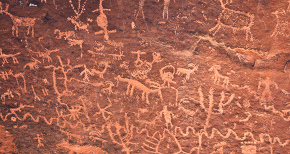The SAA produces a number of high-quality publications such as our quarterly journals, published in partnership with Cambridge University Press, as well as our magazine and the books published by The SAA Press. SAA publications provide a key service and benefit to SAA members as well as the general public.
American Antiquity
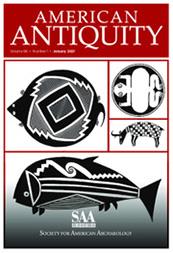
American Antiquity is a peer-reviewed, quarterly journal and is considered the premier journal of North American archaeology, devoted to the archaeology of the New World, method and theory pertinent to the study of New World archaeology, and closely related subjects.
Login Required
To view tables of contents and free issues only, visit Cambridge Core; to access all other issues, log on to the " For Members" tab and then "Access Your Online Journals" to navigate to the desired issue.
Permission requests related to the SAA’s journals are now handled by Cambridge University Press, our publishing partner. Please follow the instructions below to request permission to reprint material from Advances in Archaeological Practice, American Antiquity, Latin American Antiquity, or Memoirs of the Society for American Archaeology.
First, you must find the article from which you are requesting permission to reproduce material on the Cambridge Core site. If you are not a current SAA member, you can view tables of contents and abstracts by visiting Cambridge Core. Current SAA members can access full content by logging on to the “For Members” tab and then click on “Access Your Online Journal(s)” to navigate to the desired journal/issue.
Once you have accessed the article in question on Cambridge Core, click on the “Rights & Permissions” button that appears above the abstract. From there you will be directed to the RightsLink platform hosted by the Copyright Clearance Center.
For additional assistance, please contact permissions@cambridge.org
New in June 2017 and updated in December 2023, the Society for American Archaeology has released a fully revised and updated publication policy and style guide in English and Spanish. The new guide provides updated submission requirements and policies, as well as procedures as they relate to our publishing partner, Cambridge University Press. In the updated guide you will find more robust guidance regarding diversity and inclusivity in language and for citing Indigenous and Traditional Knowledge and various electronic sources (websites, blogs, etc.), updated protocols for certain formatting issues (e.g., references cited styling and including issue numbers for all periodicals), information regarding the requirement to document funding, data availability, and competing interests, and more. The submission and style requirements are effective immediately, so please be sure to carefully review the new guide before you submit a manuscript.
Download the PDFs here:
or
(If you do not have Acrobat, you can download it for free from the Adobe site.)
NEW
Authors are encouraged to use the Citation Style Language (CSL) supplied by the SAA for formatting their references. A CSL is a standardized format used to automate the consistent formatting of citations and bibliographies in academic writing. This file works seamlessly with reference management software like Zotero or Mendeley. The SAA's CSL file can be downloaded from https://www.zotero.org/styles?q=id%3Asociety-for-american-archaeology.
Latin American Antiquity

Latin American Antiquity is a quarterly journal that publishes original papers on the archaeology, ethnohistory, and art history of Latin America and the Caribbean and all regions in the continental New World that are south of the current U.S.-Mexico border. The journal publishes ARTICLES, REPORTS, and COMMENTS in method and theory, field research, and analysis that use a Latin American database as defined above.
Login Required
Permission requests related to the SAA’s journals are now handled by Cambridge University Press, our publishing partner. Please follow the instructions below to request permission to reprint material from Advances in Archaeological Practice, American Antiquity, Latin American Antiquity, or Memoirs of the Society for American Archaeology.
First, you must find the article from which you are requesting permission to reproduce material on the Cambridge Core site. If you are not a current SAA member, you can view tables of contents and abstracts by visiting Cambridge Core. Current SAA members can access full content by logging on to the “For Members” tab and then click on “Access Your Online Journal(s)” to navigate to the desired journal/issue.
Once you have accessed the article in question on Cambridge Core, click on the “Rights & Permissions” button that appears above the abstract. From there you will be directed to the RightsLink platform hosted by the Copyright Clearance Center.
For additional assistance, please contact permissions@cambridge.org
New in June 2017 and updated in December 2023, the Society for American Archaeology has released a fully revised and updated publication policy and style guide in English and Spanish. The new guide provides updated submission requirements and policies, as well as procedures as they relate to our publishing partner, Cambridge University Press. In the updated guide you will find more robust guidance regarding diversity and inclusivity in language and for citing Indigenous and Traditional Knowledge and various electronic sources (websites, blogs, etc.), updated protocols for certain formatting issues (e.g., references cited styling and including issue numbers for all periodicals), information regarding the requirement to document funding, data availability, and competing interests, and more. The submission and style requirements are effective immediately, so please be sure to carefully review the new guide before you submit a manuscript.
Download the PDFs here:
or
(If you do not have Acrobat, you can download it for free from the Adobe site.)
NEW
Authors are encouraged to use the Citation Style Language (CSL) supplied by the SAA for formatting their references. A CSL is a standardized format used to automate the consistent formatting of citations and bibliographies in academic writing. This file works seamlessly with reference management software like Zotero or Mendeley. The SAA's CSL file can be downloaded from https://www.zotero.org/styles?q=id%3Asociety-for-american-archaeology.
Advances in Archaeological Practice
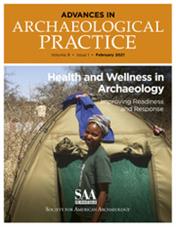
Advances In Archaeological Practice is a quarterly, open access, digital journal devoted to sharing creative solutions to challenges in the practice of archaeology globally.
Login Required
To view tables of contents and free issues only, visit Cambridge Core; to access all other issues, log on to the " For Members" tab and then "Access Your Online Journals" to navigate to the desired issue.
New in June 2017 and updated in December 2023, the Society for American Archaeology has released a fully revised and updated publication policy and style guide in English and Spanish. The new guide provides updated submission requirements and policies, as well as procedures as they relate to our publishing partner, Cambridge University Press. In the updated guide you will find more robust guidance regarding diversity and inclusivity in language and for citing Indigenous and Traditional Knowledge and various electronic sources (websites, blogs, etc.), updated protocols for certain formatting issues (e.g., references cited styling and including issue numbers for all periodicals), information regarding the requirement to document funding, data availability, and competing interests, and more. The submission and style requirements are effective immediately, so please be sure to carefully review the new guide before you submit a manuscript.
Download the PDFs here:
or
(If you do not have Acrobat, you can download it for free from the Adobe site.)
NEW
Authors are encouraged to use the Citation Style Language (CSL) supplied by the SAA for formatting their references. A CSL is a standardized format used to automate the consistent formatting of citations and bibliographies in academic writing. This file works seamlessly with reference management software like Zotero or Mendeley. The SAA's CSL file can be downloaded from https://www.zotero.org/styles?q=id%3Asociety-for-american-archaeology.
Permission requests related to the SAA’s journals are now handled by Cambridge University Press, our publishing partner. Please follow the instructions below to request permission to reprint material from Advances in Archaeological Practice, American Antiquity, Latin American Antiquity, or Memoirs of the Society for American Archaeology.
First, you must find the article from which you are requesting permission to reproduce material on the Cambridge Core site. If you are not a current SAA member, you can view tables of contents and abstracts by visiting Cambridge Core. Current SAA members can access full content by logging on to the “For Members” tab and then click on “Access Your Online Journal(s)” to navigate to the desired journal/issue.
Once you have accessed the article in question on Cambridge Core, click on the “Rights & Permissions” button that appears above the abstract. From there you will be directed to the RightsLink platform hosted by the Copyright Clearance Center.
For additional assistance, please contact permissions@cambridge.org
Learn how to prepare and submit an article to Advances in Archaeological Practice with editor Sarah Herr. The recorded online seminar from 2017 covers the basics for publishing with this online journal.
As one of the principal SAA journals, Advances in Archaeological Practice is the premier place to publish original scholarly work on how archaeologists learn about the past, convey findings in the present, or manage resources for the future. Articles are short, succinct, and problem-oriented, offering tangible take-aways that can be applied quickly to the day-to-day work of archaeologists in academia, government, and private practice. “Practice” is defined broadly and topics may include, but are not limited to, innovations in approach, technique, method, technology, models, collaboration, compliance, process, ethics, public engagement, stewardship, and training. The journal is available as a benefit of membership in the SAA or by subscription.
The SAA Archaeological Record
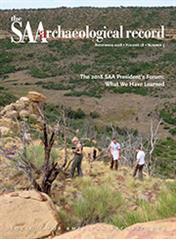
Launched in January 2001, The SAA Archaeological Record is issued five times a year. It is a four-color magazine encompassing SAA business, commentary, news, regular columns, opinions, and articles.
- Number 5, November Digital Edition
- Number 4, September Digital Edition
- Number 3, May Digital Edition
- Number 2, March Digital Edition
- Number 1, January Digital Edition
- Number 5, November Digital Edition
- Number 4, September Digital Edition
- Number 3, May Digital Edition
- Number 2, March Digital Edition
- Number 1, January Digital Edition
- Number 5, November Digital Edition
- Number 4, September Digital Edition
- Number 3, May Digital Edition
- Number 2, March Digital Edition
- Number 1, January Digital Edition
- Number 5, November Digital Edition
- Number 4, September Digital Edition
- Number 3, May Digital Edition
- Number 2, March Digital Edition
- Number 1, January Digital Edition
- Number 5, November Digital Edition
- Number 4, September Digital Edition
- Number 3, May Digital Edition
- Number 2, March Digital Edition
- Number 1, January Digital Edition
- Number 5, November Digital Edition
- Number 4, September Digital Edition
- Number 3, May Digital Edition
- Number 2, March Digital Edition
- Number 1, January Digital Edition
- Number 5, November Digital Edition
- Number 4, September Digital Edition
- Number 3, May Digital Edition | Suggested readings from Politis and Prates | Froese et al. Supplementary Tables
- Number 2, March Digital Edition | Hedquist Bibliography
- Number 1, January Digital Edition
- Number 5, November Digital Edition | Rafferty Bibliography
- Number 4, September Digital Edition
- Number 3, May Digital Edition
- Number 2, March Digital Edition
- Number 1, January Digital Edition Grange Bibliography
- Number 5, November Digital Edition
- Number 4, September Digital Edition
- Number 3, May Digital Edition
- Number 2, March Digital Edition Lister Bibliography
- Number 1, January Digital Edition
- Number 5, November Digital Edition
- Number 4, September Digital Edition Supplement
- Number 3, May Digital Edition
- Number 2, March Digital Edition
- Number 1, January Digital Edition
- Number 5, November Digital Edition
- Number 4, September Digital Edition
- Number 3, May Digital Edition
- Number 2, March Digital Edition
- Number 1, January Digital Edition
- Number 5, November Digital Edition
- Number 4, September Digital Edition
- Number 3, May Digital Edition
- Number 2, March Digital Edition
- Number 1, January Digital Edition
- Number 5, November Digital Edition
- Number 4, September Digital Edition
- Number 3, May Digital Edition
- Number 2, March Digital Edition
- Number 1, January Digital Edition
- Number 5, November Digital Edition
- Number 4, September Digital Edition
- Number 3, May Digital Edition
- Number 2, March Digital Edition
- Number 1, January Digital Edition
- Number 5, November Digital Edition
- Number 4, September Digital Edition
- Number 3, May Digital Edition
- Number 2, March Digital Edition
- Number 1, January Digital Edition
- Number 5, November PDF
- Number 4, September PDF
- Number 3, May PDF
- Number 2, March PDF
- Number 1, January PDF
- Number 5, November PDF
- Number 4, September PDF
- Number 3, May PDF
- Number 2, March PDF
- Number 1, January PDF
- Number 5, November PDF
- Number 4, September PDF
- Number 3, May PDF
- Number 2, March PDF
- Number 1, January PDF
- Number 5, November PDF
- Number 4, September PDF
- Number 3, May PDF
- Number 2, March PDF
- Number 1, January PDF
- Number 5, November PDF
- Number 4, September PDF
- Number 3, May PDF
- Number 2, March PDF
- Number 1, January PDF
- Number 5, November PDF
- Number 4, September PDF
- Number 3, May PDF
- Number 2, March PDF
- Number 1, January PDF
- Number 5, November PDF
- Number 4, September PDF
- Number 3, May PDF
- Number 2, March PDF
- Number 1, January PDF
- Number 5, November PDF
- Number 4, September PDF
- Number 3, May PDF
- Number 2, March PDF
- Number 1, January PDF
- Number 5, November PDF
- Number 4, September PDF
- Number 3, May PDF
- Number 2, March PDF
- Number 1, January PDF
- Number 5, November PDF
- Number 4, September PDF
- Number 3, May PDF
- Number 2, March PDF
- Number 1, January PDF
Launched in January 2001, the SAA Archaeological Record is issued five times a year, and is now available in "dynamic edition" format on the SAA website. It is a four-color magazine encompassing SAA business, commentary, news, regular columns, job listings, opinions, forums, and articles. The magazine is not a peer-reviewed publication and does not currently have an editorial board. Each Editor volunteers to serve a three-year term and is selected by the SAA Board from among the SAA membership. The Managing Editor is a member of the SAA staff. The SAA Archaeological Record replaced the SAA Bulletin, which was published from 1993 to 2000. The SAA Publications Committee approved these guidelines in April 2012 at the Annual Meeting in Memphis, Tennessee.
Submissions may be sent to the Editor:
Todd Ahlman
toddahlman@txstate.edu
Texas State University
Center for Archaeological Studies
601 University Drive, Trinity 120
San Marcos, TX 78666 USA
Submission Deadlines and Details
The SAA Archaeological Record publishes articles and
forums of interest to the organization’s diverse membership and is the
SAA’s primary way of proactively reaching all of its members with
organizational news and business. Authors wishing to publish in the SAA Archaeological Record
should consider the appeal of their topic to the SAA’s professional,
avocational, and student membership, and are encouraged to contact the
Editor regarding potential articles, forums, and ideas for publication.
Submissions and inquiries should be sent to the current Editor. Contact
information for the current Editor may be found inside the front page of
each issue of the magazine and on the SAA website. Electronic copies of
manuscripts are preferred. Manuscripts should be sent as Microsoft Word
documents.
Deadlines for time-sensitive materials including Letters to the Editor,
Obituaries, and pieces for “News and Notes” and the Calendar are as
follows: November 1 (January), January 1 (March), March 1 (May), July 1 (September), and September 1 (November).
News and Notes and Calendar items are published on a space-available basis.
The Editor does not solicit obituaries for publication, but memorials of
colleagues are welcomed as submissions to the magazine. Individuals
wishing to write a memorial piece should contact the Editor as soon as
they are able.
Book reviews are published in SAA journals and are not a feature of the SAA Archaeological Record.
The above deadlines do not apply to authors wishing to publish an
article in or organize a forum for the magazine. Generally, articles are
published in the order the Editor accepts them; however, the Editor
reserves the right to publish accepted materials in a manner that
enhances content and accommodates time-sensitive material from the SAA
and its members. Most articles are published within a year of their
acceptance.
Forums may be proposed at any time and should include an abstract as
well as a list of potential contributors. The Editor will evaluate the
proposal, and if accepted the forum will be scheduled for publication in
a specific issue of the magazine. The Editor will issue a deadline for
forum participants. Most forums are published within a year of their
acceptance. It is the responsibility of the forum organizer/guest editor
to communicate relevant policies and procedures to contributors, to
collect the manuscripts from contributors and provide them to the
Editor, and to review the manuscripts to be sure authors have followed
the guidelines and style guide for the magazine prior to submitting them
to the Editor.
Advertising and placement ads should be sent to the manager, Membership
and Marketing (advertising@saa.org).
Submission Lengths and Style Guide
Items for News and Notes and the Calendar should be between 50 and 150
words. Longer pieces and pieces with artwork cannot be accepted.
Obituaries should be kept to 650 words including selected bibliographies. Bibliographies will generally be published online only. A single photograph may accompany memorial pieces.
Article lengths vary, and authors are encouraged to contact the editor
to negotiate an appropriate word count for their articles. Most articles
are kept to fewer than 2,500 words, although occasionally items up to
4,500 words are accepted for publication. Longer articles generally are
subjected to longer wait times for publication.
Because the SAA Archaeological Record is a magazine and not a
peer-reviewed journal, authors are strongly encouraged to keep
bibliographic citations to a minimum and to focus their content
accordingly. If an extended bibliography is required, a selected
bibliography may be published in the magazine and an author’s contact
information furnished for those wishing to acquire a full list of
citations.
The magazine does not publish abstracts, keywords, or summaries with articles, and these items do not need to be submitted.
Photographs and Images
High-quality color images are encouraged with each submission to the SAA Archaeological Record.
The number of images is subject to approval by the Editor, but as a
general rule between 3 and 5 images is considered ideal for the magazine
format.
All photographs, images, and other figures submitted must be at least
300 dpi in resolution at 7 inches wide (4 megapixels). Written
permission must be obtained from the copyright holder (usually the
photographer), and also from each individual depicted in a recognizable
fashion in the image. For further questions about copyright permissions,
please contact the Managing Editor at publications@saa.org
Single images for the cover are welcome from all SAA members, whether or
not they are authors in the magazine. Magazine images must also have at
least a 300 dpi resolution when the image is expanded to a 9” × 12”
size (2700 × 3600 pixels, or 9 megapixels).
Please contact the Manager, Publications at publications@saa.org. You will need to provide the volume/issue number of the magazine, the page number(s) of the material, and a brief description. Note that in most cases, the permission of the original author will also need to be solicited (to be included on the permission request form that will be provided by the SAA), and there will be a fee of $15.00 for the first page or significant part thereof, and $10.00 for each additional page or significant part thereof, to offset the costs that the SAA spent on copyediting the magazine.
New in June 2017 and updated in December 2023, the Society for American Archaeology has released a fully revised and updated publication policy and style guide in English and Spanish. The new guide provides updated submission requirements and policies, as well as procedures as they relate to our publishing partner, Cambridge University Press. In the updated guide you will find more robust guidance regarding diversity and inclusivity in language and for citing Indigenous and Traditional Knowledge and various electronic sources (websites, blogs, etc.), updated protocols for certain formatting issues (e.g., references cited styling and including issue numbers for all periodicals), information regarding the requirement to document funding, data availability, and competing interests, and more. The submission and style requirements are effective immediately, so please be sure to carefully review the new guide before you submit a manuscript.
Download the PDFs here:
or
(If you do not have Acrobat, you can download it for free from the Adobe site.)
NEW
Authors are encouraged to use the Citation Style Language (CSL) supplied by the SAA for formatting their references. A CSL is a standardized format used to automate the consistent formatting of citations and bibliographies in academic writing. This file works seamlessly with reference management software like Zotero or Mendeley. The SAA's CSL file can be downloaded from https://www.zotero.org/styles?q=id%3Asociety-for-american-archaeology.
The Society's four-color magazine, issued five time a year, encompassing SAA business, commentary, news, regular columns, software reviews, opinions, and articles.
Print and electronic editions are published simultaneously. Include a website in your ad and when readers click on it in the electronic edition, they will be redirected to your site!
AVERAGE CIRCULATION
8,000 Society members, institutions, and libraries worldwide
ESTABLISHED
January 2001 (replacing the SAA Bulletin)
MAILED
Third Class / Not-for-profit
RATES
| 1 Color |
4 Color | |
| Full Page | $523 | $578 |
| Half Page | $335 | $367 |
| Quarter Page Vertical | $268 | $284 |
| Eighth Page Horizontal | $128 | $139 |
| Covers 2 & 3 | $735 | $806 |
* Advertiser is responsible for any production cost incurred on behalf of advertiser
** A 15% discount is offered on five consecutive ads contracted for annually
*** The SAA reserves the right to reject an advertisement for any reason
SIZES
| Width | Height | ||
| Full Page (no bleed) | 7" | × | 9.125" |
| Full Page (with bleed; add 0.125 bleed on all sides) | 8" | × | 10.875" |
| Half Page Horizontal | 7" | × | 4.5" |
| Half Page Vertical | 3.375" | × | 9.125" |
| Quarter Page Vertical | 3.375" | × | 4.5" |
| Eighth Page Horizontal | 3.375" | × | 2.25 |
CLOSING DATES
| January | March | May | September | November | |
| Insertion Order | 11/26 | 01/27 | 03/19 | 07/23 | 09/24 |
| Ad Copy | 12/10 | 02/10 | 04/10 | 08/10 | 10/9 |
Ads can be reserved by completing the advertising application. All ads should be submitted in PDF format without bleed or crop marks (unless ordering a full-page ad with bleed; see above) to advertising@saa.org.
The SAA Bulletin, which preceded The SAA Archaeological Record, was published between 1983 and 2000.
- Number 5, November PDF
- Number 4, September PDF
- Number 3, May PDF
- Number 2, March PDF
- Number 1, January PDF
- Number 5, November| PDF
- Number 4, September PDF
- Number 3, May PDF
- Number 2, March PDF
- Number 1, January PDF
- Number 5, November PDF
- Number 4, September PDF
- Number 3, May PDF
- Number 2, March PDF
- Number 1, January PDF
- Number 5, November PDF
- Number 4, September PDF
- Number 3, May PDF
- Number 2, March PDF
- Number 1, January PDF
- Number 5, November PDF
- Number 4, September PDF
- Number 3, May PDF
- Number 2, March/April PDF
- Number 1, January-February PDF
- Number 5, November-December PDF
- Number 4, September-October PDF
- Number 3, June-July-August PDF
- Number 2, March-April-May PDF
- Number 1, January-February PDF
- Number 5, November-December PDF
- Number 4, September-October PDF
- Number 3, June-July-August PDF
- Number 2, March-April PDF
- Number 1, January-February PDF
- Number 5, November-December PDF
- Number 4, September-October PDF
- Number 3, June-July-August PDF
- Number 2, March-April PDF
- Number 1, January-February PDF
- Number 5, November-December PDF
- Number 4, September-October PDF
- Number 3, June-July-August PDF
- Number 2, March-May PDF
- Number 1, January PDF
- Number 5, November PDF
- Number 4, September PDF
- Number 3, June PDF
- Number 2, March PDF
- Number 1, January PDF
- Number 5, November PDF
- Number 4, September PDF
- Number 3, June PDF
- Number 2, April PDF
- Number 1, January PDF
- Number 6, November PDF
- Number 5, September PDF
- Number 4, June PDF
- Number 3, May PDF
- Number 2, March PDF
- Number 1, January PDF
- Number 6, November PDF
- Number 5, September PDF
- Number 4, July PDF
- Number 3, May PDF
- Number 2, March PDF
- Number 1, January PDF
- Number 5, November PDF
- Number 4, September PDF
- Number 3, July PDF
- Number 2, May PDF
- Number 1, March PDF
- Number 5, November PDF
- Number 4, September PDF
- Number 3, June PDF
- Number 2, MarchPDF
- Number 1, January PDF
- Number 5, November PDF
- Number 4, September PDF
- Number 3, July PDF
- Number 2, April PDF
- Number 1, February PDF
- Number 6, December PDF
- Number 5, September PDF
- Number 4, May PDF
- Number 3, March PDF
- Number 2, February PDF
- Number 1, January PDF
- Number 5, December PDF
- Number 4, September PDF
- Number 3, May PDF
- Numbers 1 & 2, March PDF
Questions? Contact membership@saa.org.
Memoirs of the Society for American Archaeology
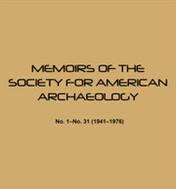
The Memoirs of the Society for American Archaeology were published between 1941 and 1976, and constituted monographs on subjects that required greater depth than could be obtained in a single article published within American Antiquity. Issues may be viewed online via Cambridge Core. Access to the Memoirs is a benefit of membership in the SAA.
The SAA Press
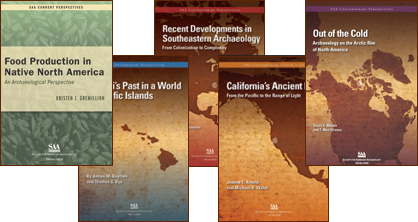
Titles published by the SAA Press are now distributed by the University Press of Colorado. To order online, please visit https://upcolorado.com/university-press-of-colorado/itemlist/tag/SAA%20Press.
For information about other ways to purchase SAA Press titles, both in the United States and internationally, please visit https://upcolorado.com/our-books/how-to-buy.
Click here to view or download the current SAA Press Catalog.
Welcome to The SAA Press! The SAA Press is the official book-publishing unit of the Society for American Archaeology. Its books focus on the discipline and context of archaeological endeavors and help archaeologists in their work, be it in the private sector, government, schools, universities, and museums. The press has two publication series: Current Perspectives provides brief up-to-date overviews of the current state of archaeological knowledge of a geographic region or a theoretical/methodological issue. Archaeology in Action addresses key issues in archaeological research and practice including fieldwork and ethics.
If you would like to submit a proposal, or if you questions about the editorial process, please contact editor Carrie Heitman at
Carrie Heitman
University of Nebraska-Lincoln
816 Oldfather Hall
Lincoln, NE 68588-0368
Email: cheitman2@nebraska.edu
New in June 2017 and updated in December 2023, the Society for American Archaeology has released a fully revised and updated publication policy and style guide in English and Spanish. The new guide provides updated submission requirements and policies, as well as procedures as they relate to our publishing partner, Cambridge University Press. In the updated guide you will find more robust guidance regarding diversity and inclusivity in language and for citing Indigenous and Traditional Knowledge and various electronic sources (websites, blogs, etc.), updated protocols for certain formatting issues (e.g., references cited styling and including issue numbers for all periodicals), information regarding the requirement to document funding, data availability, and competing interests, and more. The submission and style requirements are effective immediately, so please be sure to carefully review the new guide before you submit a manuscript.
Download the PDFs here:
or
(If you do not have Acrobat, you can download it for free from the Adobe site.)
NEW
Authors are encouraged to use the Citation Style Language (CSL) supplied by the SAA for formatting their references. A CSL is a standardized format used to automate the consistent formatting of citations and bibliographies in academic writing. This file works seamlessly with reference management software like Zotero or Mendeley. The SAA's CSL file can be downloaded from https://www.zotero.org/styles?q=id%3Asociety-for-american-archaeology.
Please contact the manager, Publications, at publications@saa.org. You will need to provide the book title, the page number(s) of the material, and a brief description. Note that in most cases, the permission of the original author will also need to be solicited (to be included on the permission request form that will be provided by SAA), and there will be a fee of $15.00 for the first page or significant part thereof, and $10.00 for each additional page or significant part thereof.
To make a request, please submit this form.
Instructors who wish to consider books for course adoption may request examination copies; instructors who have formally adopted books for courses may request desk copies. Books available only in hardcover will be sent in electronic form until/unless they are formally adopted. Paperback editions, when available, will be sent at no charge. Limit 3 per course per semester. Please send any questions to beth@upcolorado.com.

